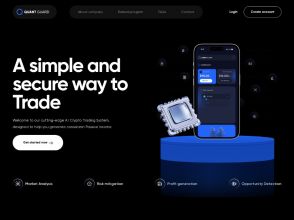
Exploring online investment platforms - a guide for novice investors
 In today's digital age, the world of investing has been revolutionized by online investment platforms. These platforms offer convenience, accessibility, and a wide range of investment opportunities.
In today's digital age, the world of investing has been revolutionized by online investment platforms. These platforms offer convenience, accessibility, and a wide range of investment opportunities. For novice investors who are eager to enter the world of online investing, this article serves as a comprehensive guide to understanding online investment platforms and how to get started.
Exploring Online Investment Platforms: A Guide for Novice Investors
1. What are Online Investment Platforms?
Online investment platforms are digital platforms that allow individuals to invest their money in various financial instruments and assets. These platforms provide a user-friendly interface, giving investors the ability to manage their investments and access a wide range of investment options such as stocks, bonds, mutual funds, exchange-traded funds (ETFs), cryptocurrencies, and more.
2. Benefits of Online Investment Platforms:
🔹 Accessibility: Online investment platforms provide 24/7 access to your investment portfolio, allowing you to view, manage, and make transactions at your convenience.
🔹 Lower Costs: Many online platforms offer lower fees and commissions compared to traditional brokerage firms, allowing you to keep more of your investment returns.
🔹 Diversification: Online platforms often provide a diverse array of investment options, enabling you to build a well-rounded portfolio and spread your risk across different asset classes.
🔹 Education and Research: Most platforms provide tools, educational resources, and market research to help novice investors learn about investing and make informed decisions.
3. Getting Started with Online Investment Platforms:
a. Determine Your Investment Goals:
Before selecting an online investment platform, define your investment objectives, risk tolerance, and desired investment timeline. This clarity helps you choose the platform that aligns with your goals.
b. Research and Compare Platforms:
Conduct thorough research on different online investment platforms. Look for factors such as fees, investment options, customer service, ease of use, and security measures. Compare platforms to find the one that best suits your needs.
c. Account Setup:
Once you've selected a platform, sign up and create an account. This usually involves providing personal information, completing identity verification, and funding your account.
d. Selecting Investments:
Familiarize yourself with the investment options available on the platform. Consider your risk tolerance, time horizon, and diversification goals. Start with a small amount and gradually increase your investments as you become more comfortable.
e. Monitor and Review:
Regularly monitor your investments and review your portfolio's performance. Stay updated with market trends and news that may affect your investments.
4. Risk Management and Due Diligence:
🔹 Diversify Your Portfolio: Spread your investments across different asset classes to reduce risk. Diversification helps mitigate the impact of market fluctuations on your overall portfolio.
🔹 Perform Due Diligence: Before investing in any specific stocks, funds, or other investment options, thoroughly research and evaluate them. Consider factors such as historical performance, financial health, management team, and market conditions.
🔹 Set Realistic Expectations: Understand that investments come with risks, and returns may fluctuate. Set realistic expectations and avoid chasing quick gains. Focus on long-term growth and wealth accumulation.
Conclusion about online investment platforms
Online investment platforms have opened up a world of opportunities for novice investors by providing easy access to diverse investment options.
By understanding the benefits of online investment platforms, conducting thorough research, and implementing sound risk management practices, novice investors can embark on their online investing journey with confidence. Remember to set clear investment goals, educate yourself, and regularly review and adjust your portfolio.
Other News

Add a review











 The rise of robo-advisors - how auto investing is changing the game
The rise of robo-advisors - how auto investing is changing the game How to assess the credibility - and track record of a HYIP program
How to assess the credibility - and track record of a HYIP program Realistic goals - setting realistic goals for online investments
Realistic goals - setting realistic goals for online investments Withdrawal Process - unveiling the withdrawal process in HYIP monitor
Withdrawal Process - unveiling the withdrawal process in HYIP monitor









